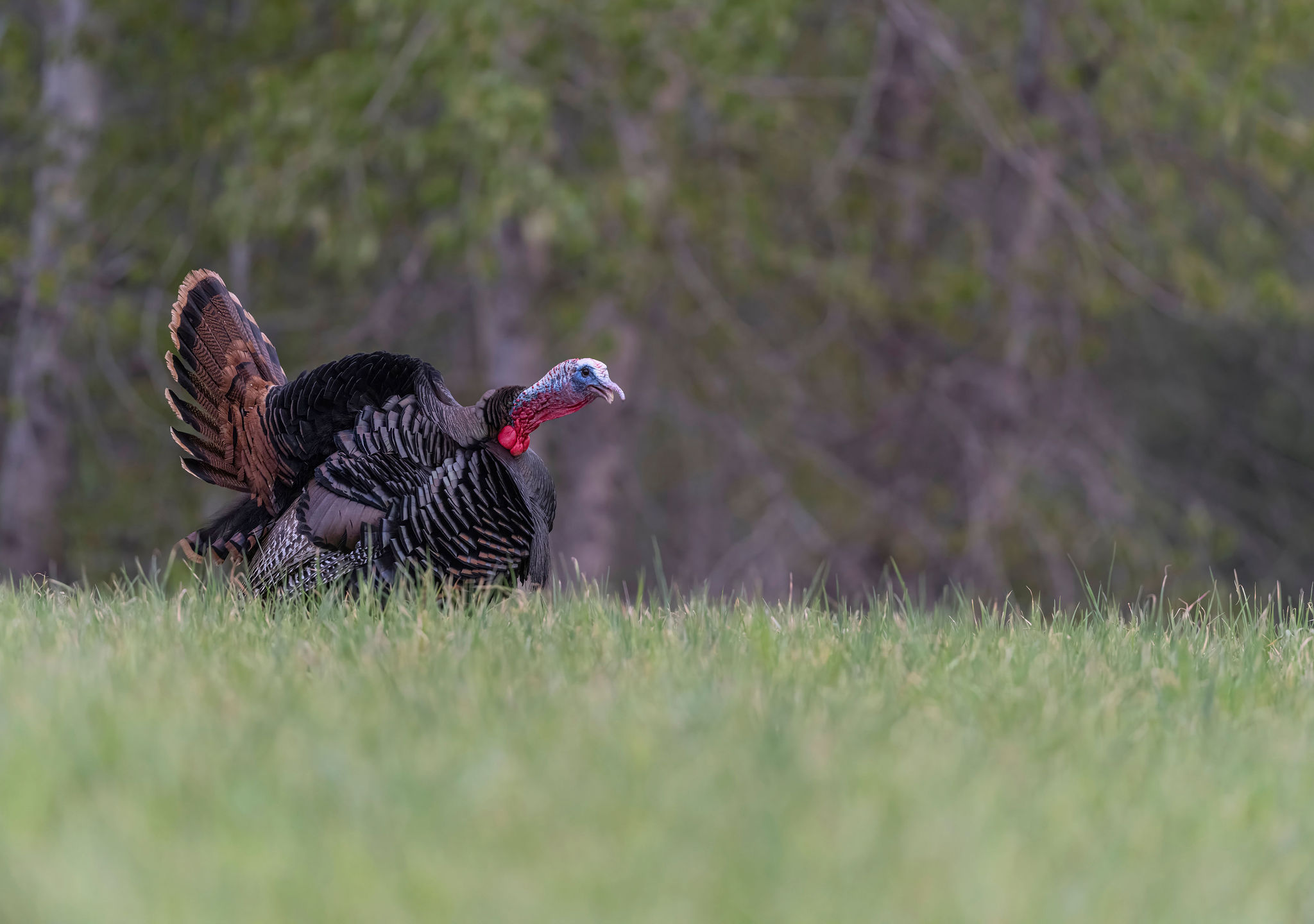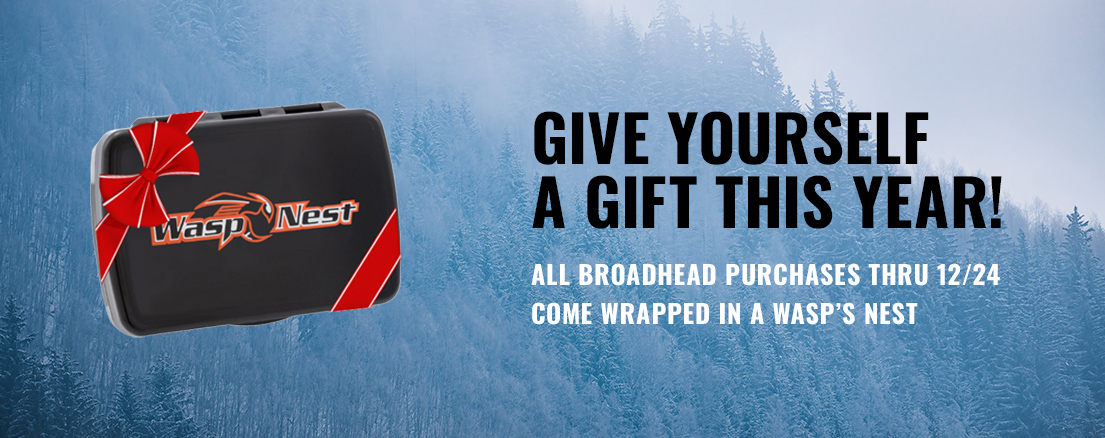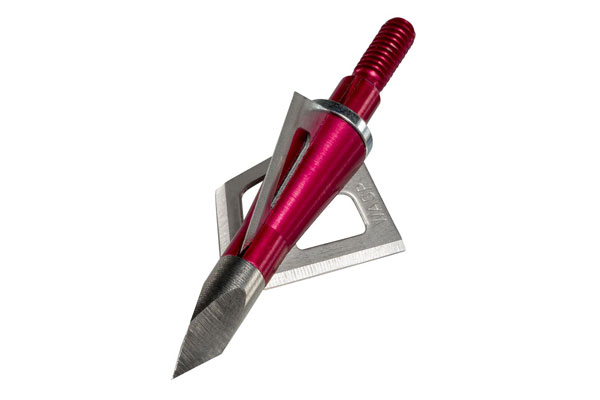How to Get a Gobbler into Chip-Shot Bow Range
Successfully bowhunting turkeys requires specific tactics. From setup to decoys to calling, here’s how to get a tom inside that magic 15-yard mark
Last month we explored the best shot placement for wild turkeys. If you didn’t catch that one, it’s worth going back for a look. Gobblers have kill zones that are small and tough to identify. The consequence for hitting just a couple inches off the mark could be a wounded and lost tom.
In addition to knowing where to hit, it’s important to keep your shots at turkeys close. Most bowhunters should not shoot at turkeys beyond 20 yards, and 10-12 yards or even closer is ideal. But to get a sharp-eyed gobbler that close requires some specialized hunting techniques.
MAKE A PERFECT SETUP
Wild turkeys are practically scared of their own shadows, so you must create a tight setup. If you’re hunting from a ground blind, stake it down securely so that it doesn’t flap in the wind. Also, keep the windows behind you closed and the interior dark so that approaching turkeys cannot skyline you through the blind.
Avoid setting up with your decoys to the east during a morning hunt or to the west during an afternoon hunt. Sun beaming into your blind will spotlight your movements. If you’re hunting without a blind, hiding well is the first priority. Beyond head-to-toe camo concealment, you need some backdrop cover. Frontal cover also helps as long as it doesn’t interfere with your bow or arrow. Turkeys have phenomenal eyesight, so you must disrupt your human outline. Also, you’ll have the challenge of drawing your bow without a ground blind’s concealment. Set up with obstacles — brush piles, large tree trunks, dirt mounds, hay bales, etc. — around you so that a gobbler must pass behind them while approaching your decoys, giving you the chance to hit full draw.
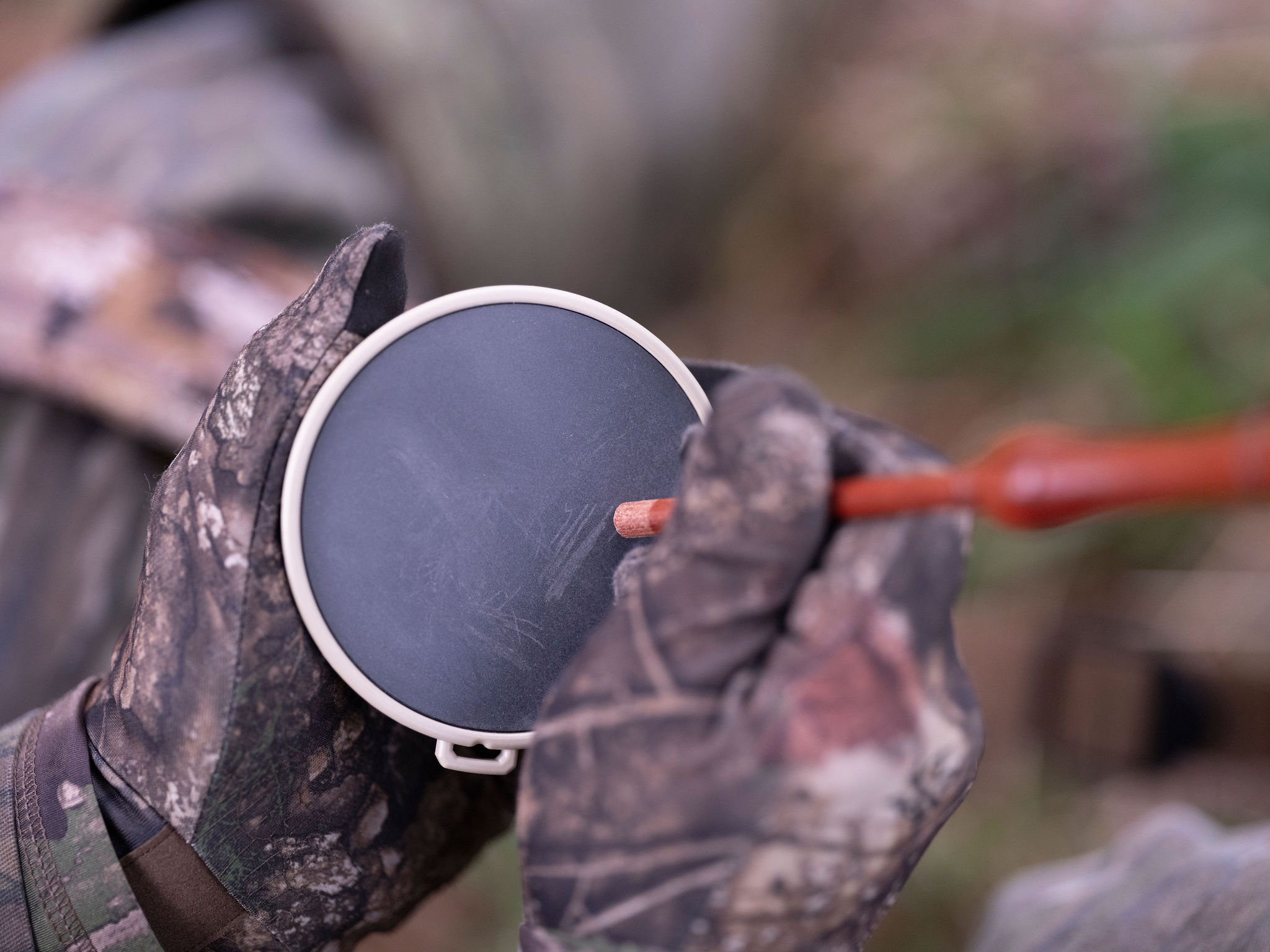
Many turkey hunters call too much, too early. Start the day with soft yelps. Image by John Hafner
SAY THE RIGHT THINGS
One of the biggest mistakes hunters make is overcalling to a roosted gobbler. It’s not very natural for a hen to be talking — especially loudly — from the ground while birds should still be roosted. When you’re waiting for legal shooting light, a few soft tree yelps can get the birds gobbling and let them know a hen is there, but then set your call down until the birds fly down.
Often, those initial tree yelps are the only sounds needed when you’re within 100 yards of a roosted tom. If a tom is hung up beyond shooting range, it’s always tempting to keep calling, especially if he’s answering. But sometimes it’s best to let your decoys do the convincing. Maybe issue a few soft purrs and clucks to pique his interest and give your decoys audible realism, but don’t beg. If he’s gobbling but hung up, he’s wanting the hen (your decoy) to come to him. Play hard to get, and sometimes the bird will eventually cave and commit.
One of the most effective tactics for a tom that is gobbling out of view is to call a few times and then shut up entirely. As in the previous scenario, he wants the hen to come to him, but if you cannot see him and he cannot see your decoy(s), his curiosity will often build when you stop calling. To really pluck his curiosity chord, toss some leaves to simulate a hen scratching for food. Whatever you do, don’t over-call.
There isn’t necessarily any secret sauce to turkey calling. Clucks, purrs, and yelps are all effective. In general, avoid making the same exact sequence over and over. Mix it up. Pay attention when real turkeys are communicating. You’ll hear all sorts of sounds. Mixing up your calling vocalizations and alternating between two or three different calls will make your calling more authentic.
GIVE THE RIGHT LOOK
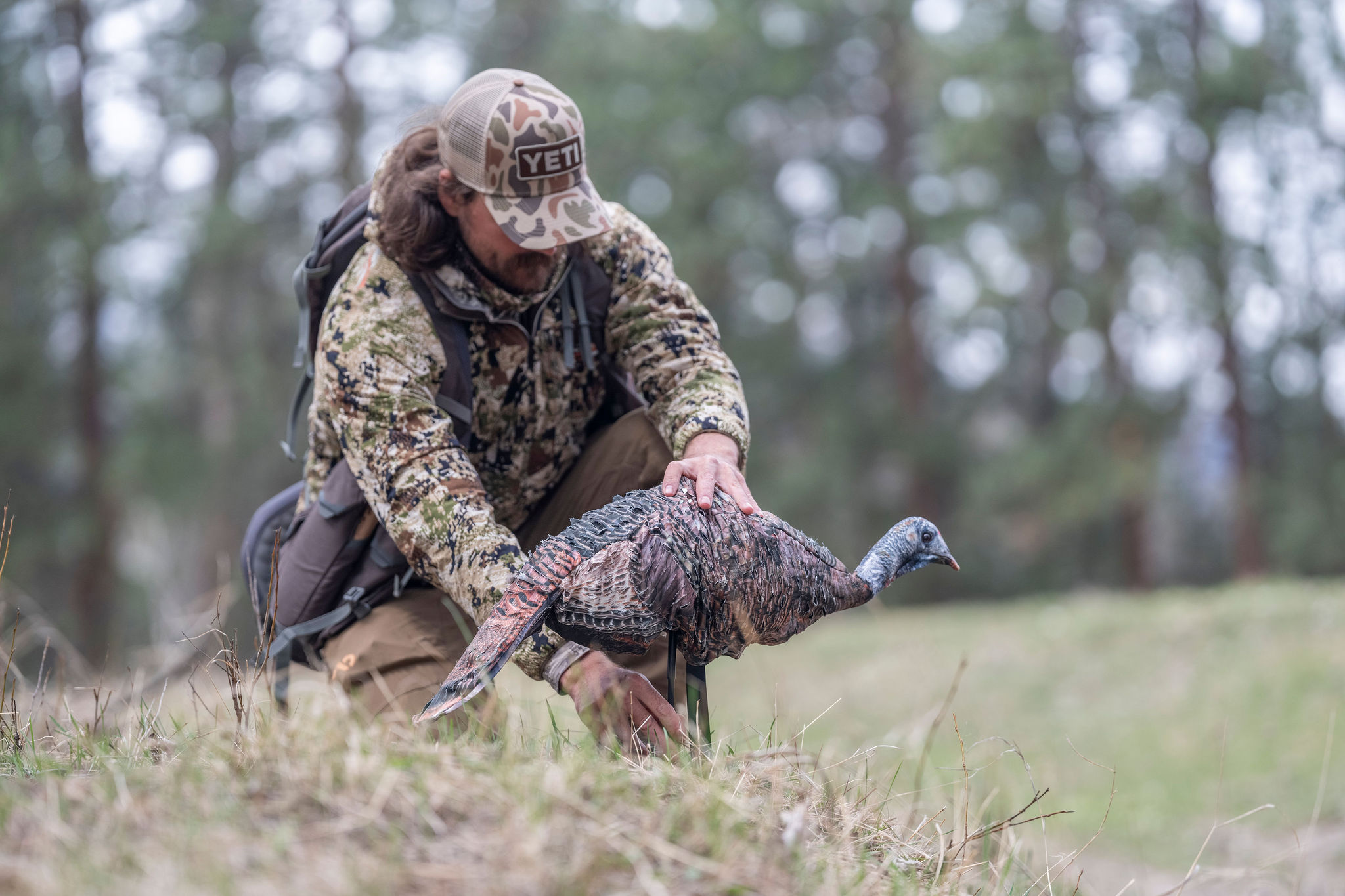
Good decoys make all the difference in getting longbeards into bow range. Image by John Hafner
Decoys are almost always a must for archery hunting turkeys. The exception is when you have a gobbler or a flock patterned. If you know they’re walking the same logging road or feeding in the same small food plot daily, a pure ambush with no calling or decoys can be effective. But in virtually all other scenarios, decoys are the ticket to success. You can often lure to a tom to 30 or 40 yards without them — but to get them to 15 yards, you need a good visual. There are many different types of decoys with different postures.
Choose decoys that look like real turkeys. A little extra money spent for quality definitely pays off. As for poses, aggressive jakes and breeding or feeding hens are effective on most gobblers. Strutting tom decoys can be especially effective on dominant gobblers, but satellite birds might avoid them. Your scouting intel should help inform your decision.
How many decoys should you use? A big spread can be enticing in some scenarios, but day in and out a jake-and-hen combo is easy to carry and highly effective. If a particular gobbler seems henned-up and uninterested in challenging the jake decoy, switching to a couple hens the next day might do the job. Sometimes tripping a dominance response from the hens works best, and if they walk into the spread, the tom will follow right in with them. Make sure your decoys are visible to the surrounding areas where you believe the turkeys will travel. If you’re hunting in a field, that’s usually the highest point in the field. If it’s in the woods, choose an open hardwood ridge or clearing in the timber.
MORE TO REMEMBER
It’s possible to be too close to a gobbler. If you put your decoys at 5 yards, that’s an easy shot, but you must know where to aim. Your top pin likely will not correspond with your arrow’s impact since the arrow hasn’t reached its point-blank trajectory. So, shoot your bow at whatever distance you’ll place your decoys and know how to aim accordingly.
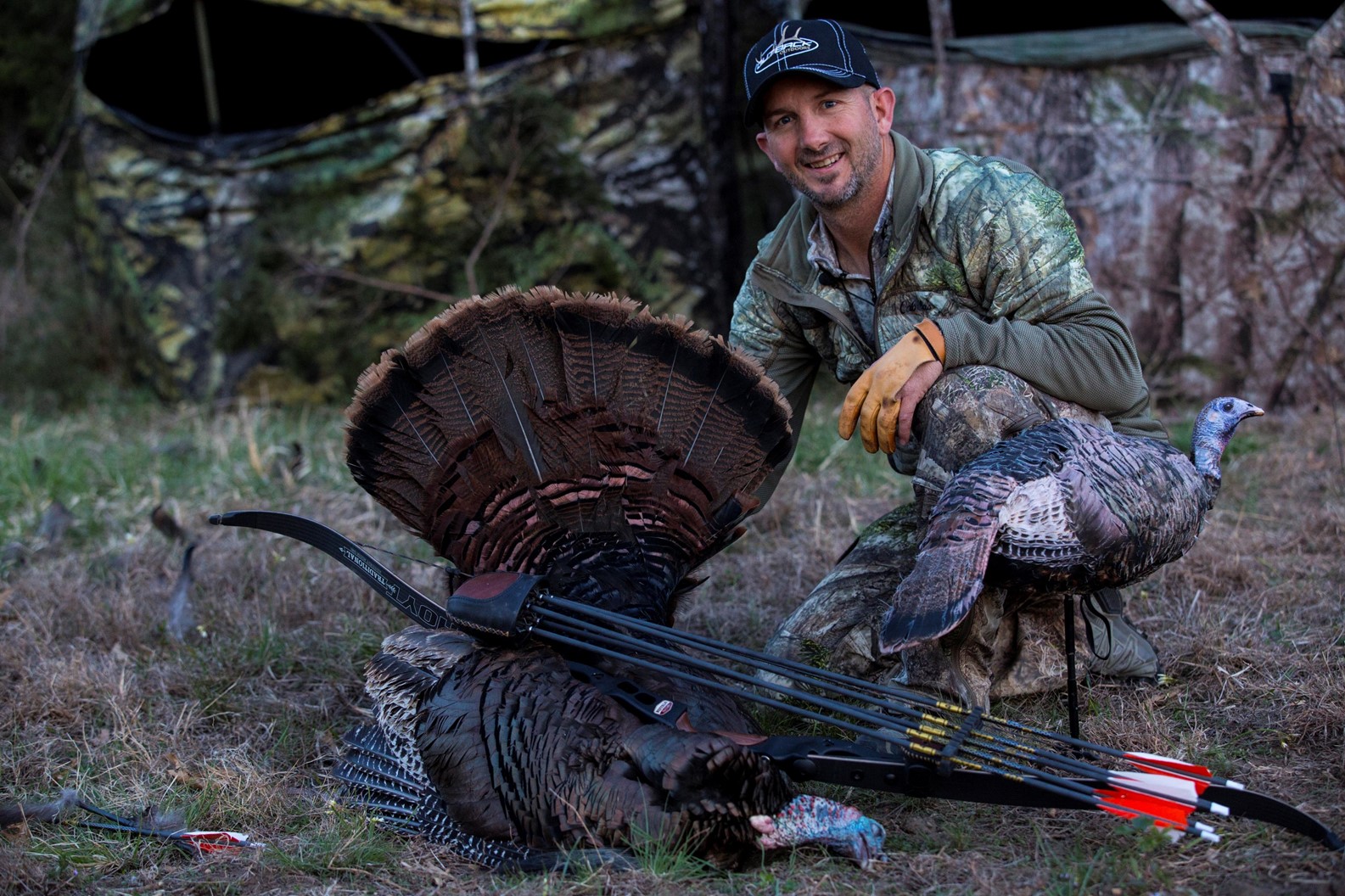
Finally, trust your shot to a quality Wasp Broadhead. For powerful bows and crossbows, large mechanicals such as the Jak-Knife, Dueler, or Jak-X will produce devastating wound channels. Light setups should rely on a shaving-sharp fixed-blade such as the Bullet or Mortem. With a medium setup, a smaller mechanical such as the Jak-Hammer 3-Blade will yield sufficient penetration, but with the advantage of a larger cut and more devastating energy transfer. There are no guarantees in the turkey woods, but the tips we’ve discussed here will certainly up your odds for a spitting-distance encounter with the king of spring.
— Story by Wasp Archery Staff
View All Posts